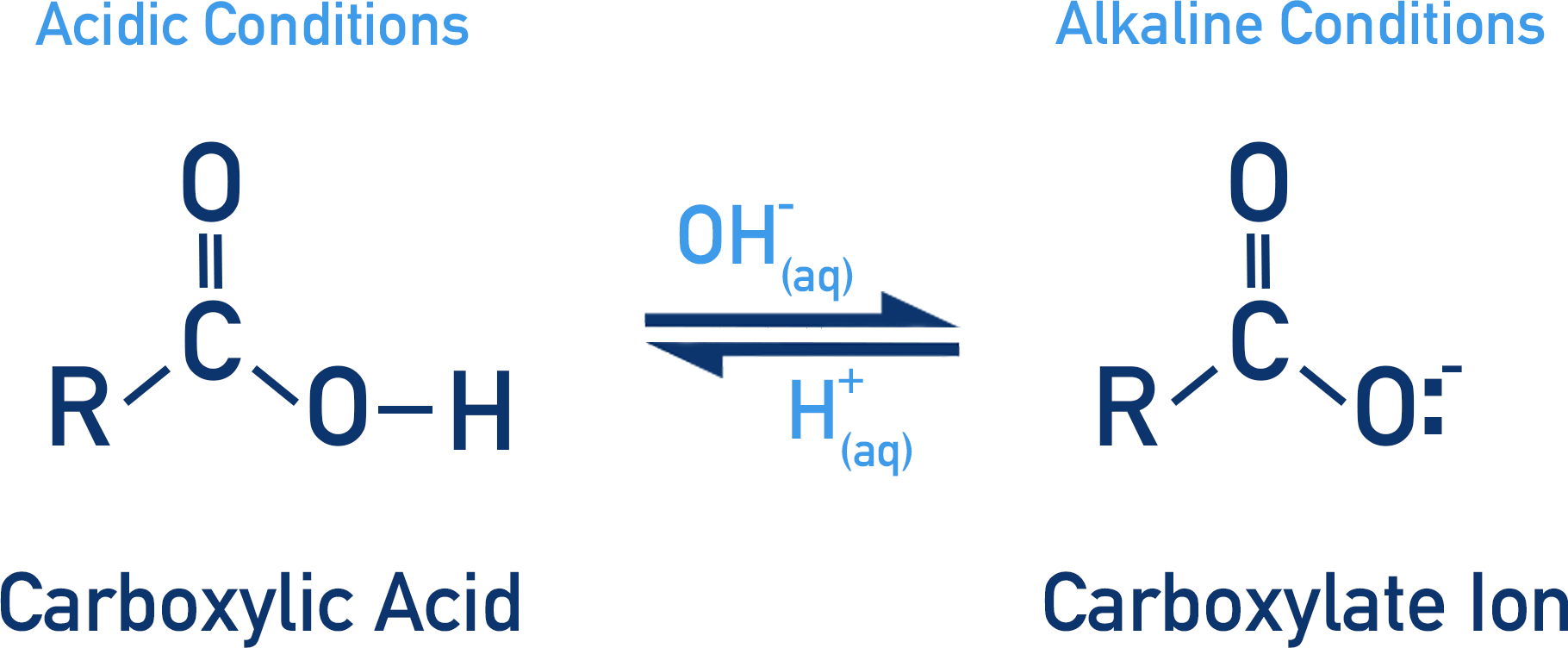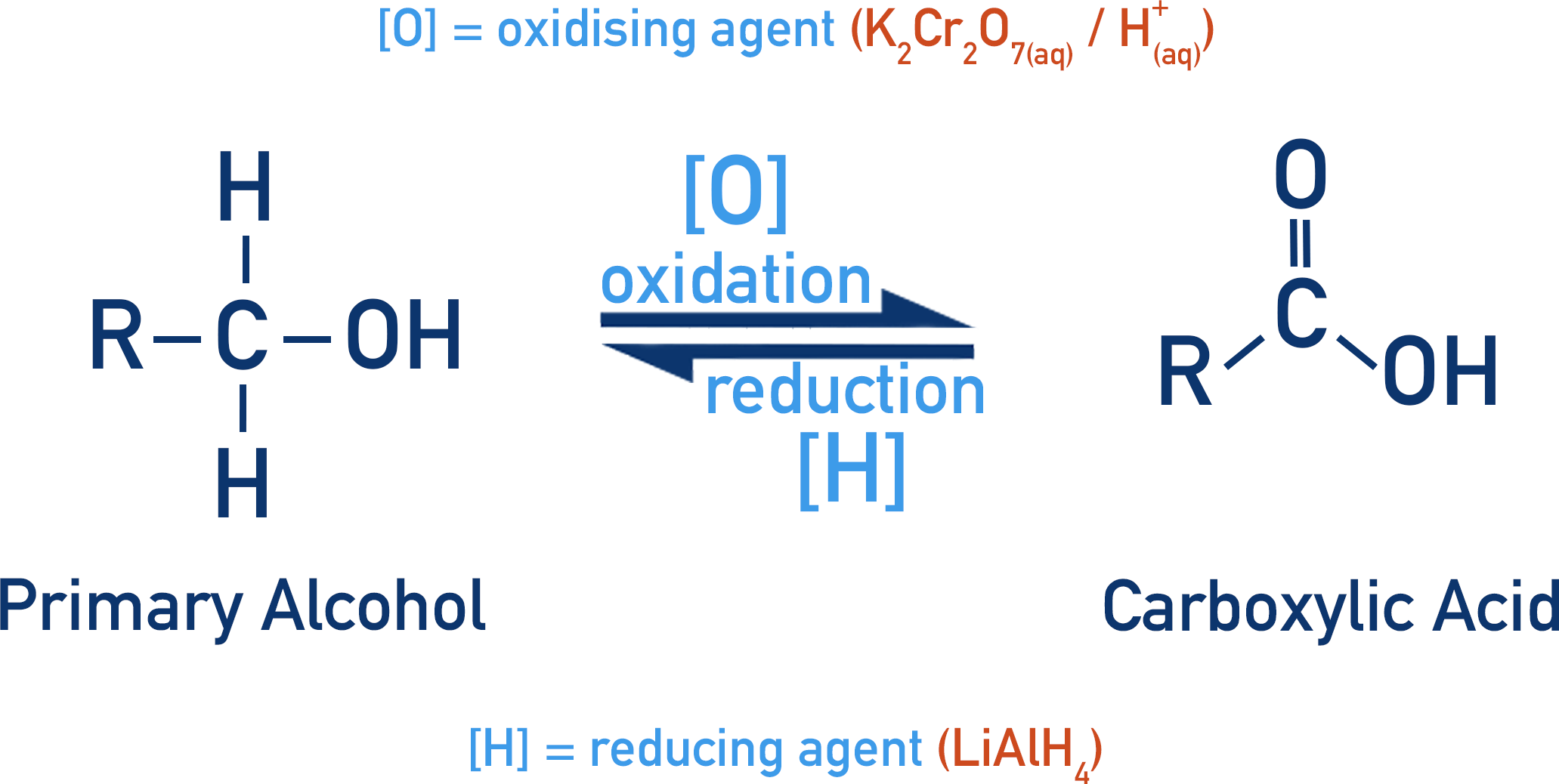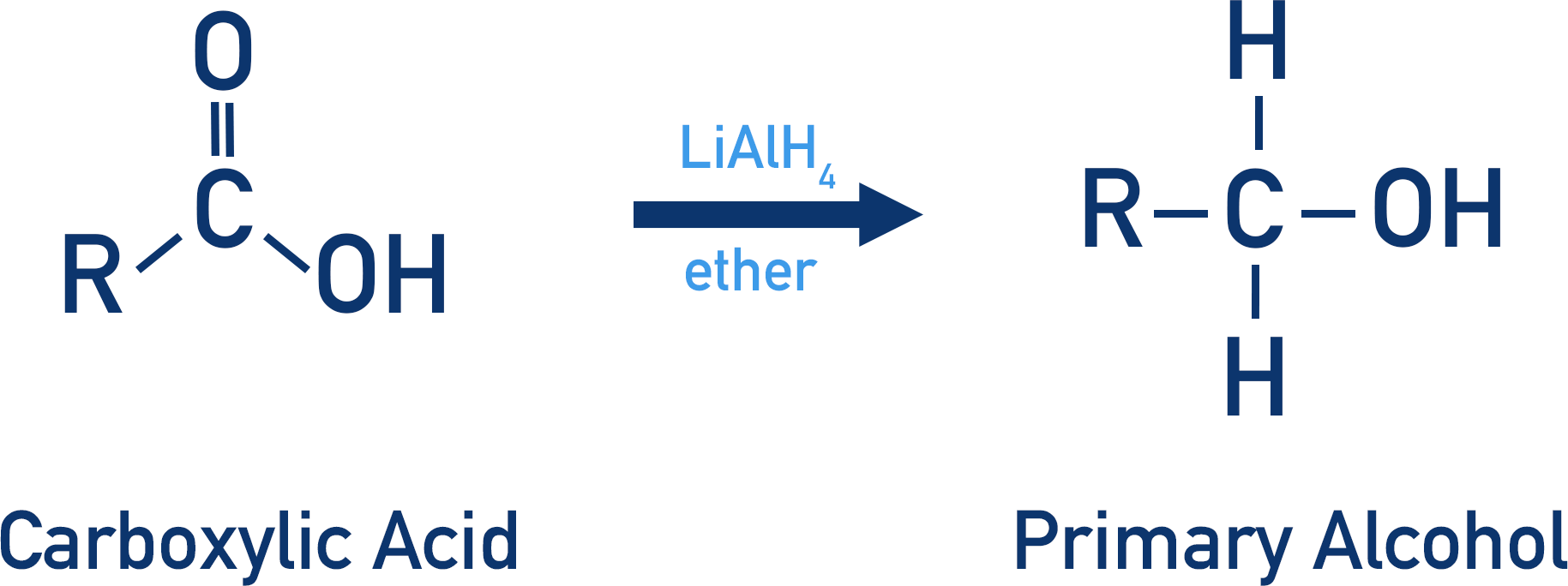Quick Notes Carboxylic Acids
- A carboxylic acid group can lose a proton to become a negatively charged carboxylate ion.

- Carboxylic acids can be formed by the oxidation of a primary alcohol with acidified potassium dichromate, under reflux conditions.
- Carboxylic acids can be reduced to primary alcohols using hydride ions (from lithium tetrahydridoaluminate (LiAlH4)).
- The reduction must be in dry ether as LiAlH4 reacts violently with water molecules.
- Negatively charged carboxylate ions can bond ionically with positive ions, forming carboxylate salts.
Full Notes Carboxylic Acids
Carboxylic acid groups contain a carbon atom with a double bond to an oxygen atom and a single bond to a hydroxyl (OH) group. They can behave as weak acids.

The C=O bond is highly polar, forcing the carbon to have a partial positive charge. The partially positively charged carbon pulls electrons towards it from the C-OH bond.

Oxygen is highly electronegative – it does not want to lose electron density to the carbon, so it pulls electrons from the O-H bond towards itself even more than usual for an O-H bond. The O-H bond is now highly polarised and is easily broken to release a H+ ion.
Forming Carboxylic Acids
Carboxylic acids can be formed by the oxidation of a primary alcohol (under reflux, to ensure the primary alcohol is fully oxidised to a carboxylic acid, rather than partially oxidised to an aldehyde).

Reactions of Carboxylic Acids
If a carboxylic acid loses a proton, it becomes a carboxylate ion with a negative charge. In alkaline conditions, a carboxylic acid exists as a carboxylate.

Carboxylate ions can bond ionically with positively charged ions to form ionic solids. When such carboxylate salts dissolve in water they fully dissociate, releasing the carboxylate ion and positive ion into solution. This is why carboxylate salts are a common source of conjugate bases in buffer systems.
Although they are only weak acids, carboxylic acids react in much the same way as other acids to form salts.
Reaction with Alkalis
When reacted with alkalis, neutralisation occurs: a carboxylate salt and water are produced.

Reaction with Carbonates
When reacted with carbonates: a carboxylate salt, carbon dioxide and water are formed.

Reaction with metals
When reacted with certain metals: a carboxylate salt and hydrogen gas are formed.

Reduction of Carboxylic Acids
Remember in organic chemistry: oxidation means increasing the number of oxygen bonds to a carbon atom and/or decreasing the number of hydrogen bonds to the carbon atom. Reduction means the opposite: decreasing the number of oxygen bonds to a carbon atom and/or increasing the number of hydrogen bonds to the carbon atom.

As a primary alcohol can be oxidised to a carboxylic acid, a carboxylic acid can be reduced to a primary alcohol.

Hydride ions are provided from lithium tetrahydridoaluminate (LiAlH4), and the reaction is carried out in dry ether. Dry ether must be used as LiAlH4 reacts violently with water and organic compounds with an –OH group.
